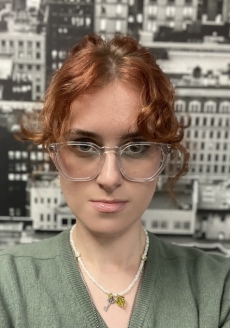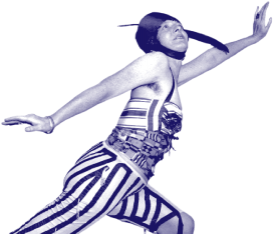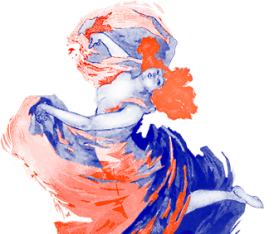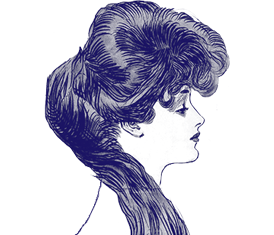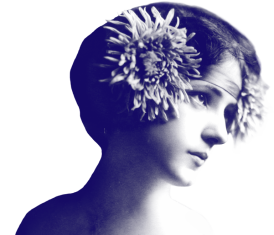
- Postdoctoral Fellows & Visiting Scholars
- PhD
- Art History & Visual Culture
- York University
Contact
Dr. Ingrid E. Mida
Ingrid E. Mida holds a PhD (2019) in Art History & Visual Culture from York University with a doctoral dissertation on the topic of “Refashioning Duchamp: An Analysis of the Waistcoat Readymade Series and Other Intersections of Fashion and Art,” and an MA (2013) in Fashion from Ryerson University. During her graduate studies, from 2012-2019, she was also responsible for the revival, curation and management of the Ryerson Fashion Research Collection. Dr. Mida is the author of many scholarly essays and of two books including Reading Fashion in Art (2020) and the editor of The Journal of Dress History; she is a member of the International Council of Museums Canada, and board trustee of the Textile Museum of Canada. As a research fellow at the MLC, she explores the intersection of fashion and art in the work of female artists from the New York avant-garde.
Book Publications
Mida, Ingrid. Reading Fashion in Art. London: Bloomsbury Academic, 2020.
Mida, Ingrid and Alexandra Kim. The Dress Detective: A Practical Guide to Object-based Research in Fashion. London: Bloomsbury Academic, 2015.
Book Chapters
Mida, Ingrid. “A Portrait of John Ruskin through his Clothes.” Ruskin’s Good Looking, edited by Sarah Casey. Coniston, England: Brantwood Museum, 2019, pp. 9-14.
Mida, Ingrid. “The Slow Approach to Seeing.” Teaching Fashion Studies, edited by Holly Kent. London: Bloomsbury Academic, 2018, pp. 95-102.
Mida, Ingrid. “Fashion + Curatorial Practice.” Die Medialität der Mode, edited by Rainer Wenrich. Norman, OK: Transcript Press, 2015, pp. 251-64.
Selected Scholarly Articles
Mida, Ingrid. “A Fashion Exhibition as Cinematic Experience.” Film, Fashion & Consumption, vol. 7, no.1, 2018, pp. 57-71.
Mida, Ingrid and Alexandra Kim. “Finding New Homes for Dress Collections: The Case Study of the Suddon-Cleaver Collection.” Fashion Theory, vol. 22, no. 4-5, 2018, pp. 478-88.
Mida, Ingrid. “The Curator’s Sketchbook: Reflections on Learning to See.” Drawing: Research, Theory, Practice, vol. 2, no. 2, 2017, pp. 275-85.
Mida, Ingrid. “The Etymology of the Curator” in “Scholars Roundtable Presentation: Everyone Their Own Curator; Professionalism and Authority in the Digital Age,” edited by Ingrid Mida. Dress, vol. 43, no.1, 2017, pp. 45-61.
Mida, Ingrid. “The Enchanted Spectacle of Fashion in the Museum." Catwalk: The Journal of Fashion, Beauty and Style, vol. 4, no.2, 2015, pp. 47-70.
Mida, Ingrid. “A Gala Performance Tutu.” Dress, vol. 42, no.1, 2016, pp. 35-47.
Mida, Ingrid. "Animating the Body in Museum Exhibitions of Fashion and Dress." Dress, vol. 41, no.1, 2015, pp. 37-51.
Exhibitions Curated
"Absent Presence: A Wedding Dress and the Drawings of Sarah Casey.” MLC Gallery, Ryerson University. May 9 – July 5, 2019.
PhD Dissertation
Mida, Ingrid. “Refashioning Duchamp: An Analysis of the Waistcoat Readymade Series and Other Intersections of Fashion and Art,” Art History & Visual Culture, York University, 2019. Supervisors: Irene Gammel and Anna Hudson
Abstract: French-American artist Marcel Duchamp (1887-1968) is best known as the iconoclastic author of the readymade. In spite of the vast corpus of scholarship dedicated to his oeuvre, the artist’s preoccupation with clothing has remained virtually unexamined and yet, as this dissertation argues, is of central importance to our understanding of the readymade. Using art historical considerations of the readymade, along with theories of fashion, identity construction, and curation, this dissertation presents a case for reconsidering Duchamp’s oeuvre with a focus on clothing to answer a central research question: What ultimately is the difference between a Duchamp readymade and an object of fashion exhibited in a museum? The answer, I argue, emerges by bringing the concepts of fashion studies and curatorial studies into a dialogue with Duchamp’s readymade. Specifically, this dissertation explores (1) Duchamp’s underexplored series of early drawings that reveal the artist’s profound interest in the clothed body; (2) Duchamp’s fashioning of his public self through clothing and photography that circulated widely in the mass media and more privately in avant-garde circles; (3) Duchamp’s waistcoat readymades Made to Measure (1957-1961) that expand the boundaries of the readymade into clothing; and (4) Duchamp’s use of fashion in his exhibition designs for the Surrealists in 1938 and 1942. By focusing on the material traces of Duchamp’s fashioning of his body and identity in his work, this dissertation argues that Duchamp’s use of clothing profoundly disrupts the notion that art cannot be worn. By exploring Duchamp’s use of clothing as art, this study advances scholarly knowledge at the intersections of art history and fashion studies, considering also the dynamic engagement of gender and the body in the vanguard of Modernism.



